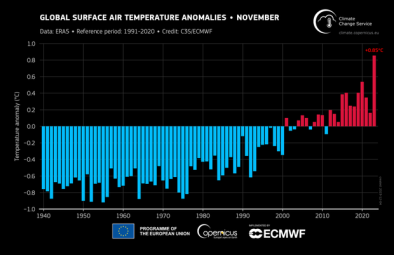Science Source
Attribution of extreme temperature changes during 1951–2010
- Conducts an attribution analysis of extreme temperature changes using updated observations (HadEX2) and multi-model climate simulation (CMIP5) datasets for an extended period of 1951–2010
- Finds that the current results provide better agreement with observations compared to previous HadEX/CMIP3-based results, which identified human contributions to the observed warming of extreme temperatures on global and regional scales
- Uses an optimal fingerprinting technique to compare observed changes in annual extreme temperature indices of coldest night and day (TNn, TXn) and warmest night and day (TNx, TXx) with multi-model simulated changes that were simulated under natural-plus-anthropogenic and natural-only (NAT) forcings
- Results confirm previous HadEX/CMIP3-based results in which anthropogenic (ANT) signals are robustly detected in the increase in global mean and northern continental regional means of the four indices of extreme temperatures
- Concludes that the detected ANT signals are also clearly separable from the response to NAT forcing, and results are generally insensitive to the use of different model samples as well as different data availability
Related Content
Headline

Feb 15, 2024 | Climate Nexus Hot News
Amazon Could Reach Tipping Point By Midcentury
Headline

Jan 16, 2024 | Climate Nexus Hot News
2023 Smashes Hottest Year Record
Headline

Dec 7, 2023 | Climate Nexus Hot News
It’s Official - 2023 Is World's The Hottest Year On Record
Headline

Dec 7, 2023 | Climate Nexus Hot News
Earth Veering Closer To Dangerous Tipping Points


